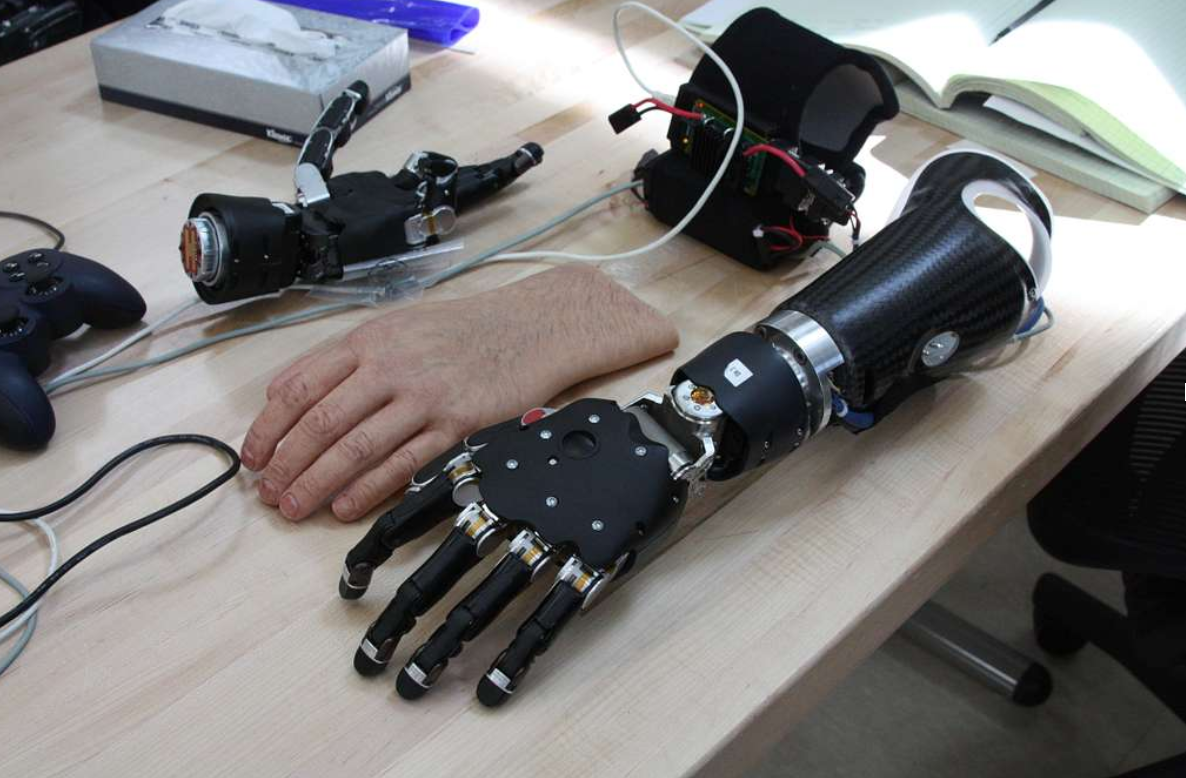When a limb is amputated or lost, an artificial limb called a prosthetic can be used to improve an individual’s quality of life. The earliest known prosthesis dates as far back as 950 B.C., when a leather toe was discovered on a mummified body in Cairo, Egypt. Since then, prosthetic technology has progressed from leather to more modern materials like steel and plastic. The person responsible for building these artificial limbs is called a prosthetist. A skilled prosthetist is like an engineer, as intricate designing and modelling is critical to create a device that provides both stability and flexibility to allow for the most human-like movement. Although there are many different types of prostheses, they all have five similar parts which include: the socket where the amputated limb fits into, the suspension that holds the prosthesis, the body of the prosthesis, the end prosthesis, and the cosmetic covering.
So how exactly are these artificial limbs created? The prosthetists at Horton’s Orthotic & Prosthetics have outlined the science behind creating a natural looking, yet functional artificial limb:
- First, the residual limb needs to be moulded.
- Measurements of the bones, tendons, and muscles are taken by the orthopaedic surgeon.
- A silicone gel is used as a liner to protect against chafing.
- Two types of plastic are used depending on the type of prosthetic needed: polypropylene for a supporting limb (leg) or polyethylene for a flexible limb (hand).
- A smooth socket is used to improve movement and fit.
- The cosmetic covering can be created using plastic polymers (polyester, epoxy, acrylic) that can control thickness, stiffness, and strength which are tailored to the individual’s preferences.
- Optional electronics can be added for greater individualisation.
A major challenge to making prosthetics is managing the unintended changes in shape of a residual limb. These changes often occur when there are fluctuations in heat and activity levels. For example, a single physiotherapy session can create enough heat to cause shape distortion, resulting in an uncomfortable prosthetic fit. The pain and discomfort of ill-fitting prosthetics often cause individuals to rarely, and in some cases never, use their prosthetics. In addition to pain, ill-fitting prosthetics can also cause limb damage such as skin breakdown, infections, and pressure sores that can impact daily life. Prosthetics can also aggregate a phenomenon called “phantom pain”, which is defined as a sensation where there is discomfort in a body part that is no longer physically there. It was previously believed this may have purely been a psychological problem, but doctors now recognize that these sensations may arise in the brain and spinal cord.
Alongside the physical changes, the psychology behind prosthetic rehabilitation is important for success. It is common for individuals to become demotivated when they are not making the progress they had hoped for in physiotherapy. This has often led to individuals with amputations becoming increasingly dependent on family and friends, and experiencing feelings of social isolation. In addition, negative and inflexible attitudes about self-image can prevent individuals from becoming physically active. For this reason, exercise and outreach programs that provide a sense of community and belonging are integral for success.
Cutting-edge prosthetic technology is on the horizon. There are many exciting prosthetic advances to come in the next decade which include brain-controlled prosthetics, 3D printing, and spinal nerve detectors that truly test the limits of biotechnology. In the future, we may be able to connect brains and nerves to control prosthetic limbs for true individualisation of prosthetics.






